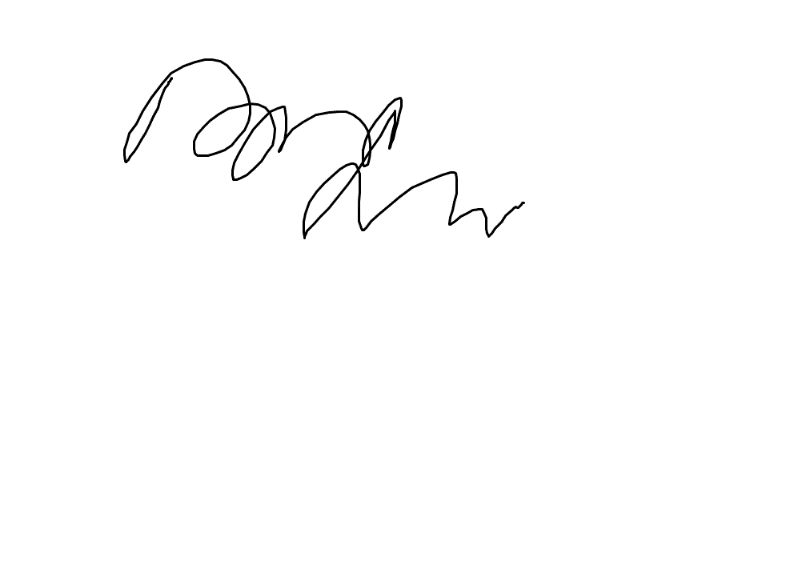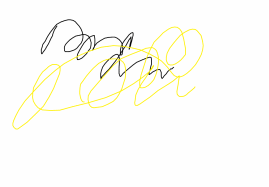Download Article
Download Article
In Microsoft Word, you can do a lot more than simple word processing—you can create charts and graphs, add media, and draw and format shapes. These quick, easy steps will show you how to draw a 3D shape or add 3D effects to existing shapes. Before beginning, make sure you have updated to the latest version of Microsoft Word.
-
1
Select Insert > Shape. You’ll find the “Insert” menu at the top of the screen.
- Mac users will see a menu of shapes appear on the right side of the screen.
- PC users will see a drop down menu of shapes.
-
2
Select a 3D shape. As you scroll through the available shapes, you’ll see a small selection of pre-formatted 3D objects, including a cube, a cylinder (“can”), and a bevel. Click on your desired shape to select it.
Advertisement
-
3
Draw your 3D shape. Click anywhere on your document and your shape will appear in previously determined measurements, usually equalling or close to 1”x1”.
- You can also click and drag to draw your shape in the desired dimensions.
-
4
Modify your shape. You can modify your shape by clicking on it to reveal resize boxes. Click and drag any of these to resize your object and also change the direction it’s facing.
Advertisement
-
1
Select Insert > Shape. You’ll find the “Insert” menu at the top of the screen.
- Mac users will see a menu of shapes appear on the right side of the screen.
- PC users will see a drop down menu of shapes.
-
2
Draw a 2D object. Click on a 2D object that you’d like to convert to three dimensions. Click on your document and your shape will appear.
-
3
Open the format menu. Right click (for Mac users, Ctrl + click) the shape and select “Format Shape”.
-
4
Rotate your object in three dimensions. Select “3-D Rotation” and use the rotation buttons to turn your shape along the X, Y, and Z axes. Play with the rotation until your shape is facing the desired direction.
- You need to rotate the shape along the X or Y axis to see the depth you are about to add.
-
5
Add depth to your object. Still in your “Format Shape” menu, select 3-D Format > Depth and Surface. Increase the “Depth” value to your desired depth and watch your 2D shape become 3D.
- You can experiment with the depth amount and the X, Y, and Z angles until you are satisfied with the look of your 3D object.
- The 3-D Format > Bevel menu allows you to add more 3D effects to the top and bottom of your object.
-
6
Click “Ok” when you are finished.
Advertisement
-
1
Add a Text Box or WordArt. Select Insert > Text Box or Insert > WordArt. You’ll find the “Insert” menu at the top of the screen. Draw your box and type your desired text in the box.
-
2
Add 3D effects to the box. Right click (for Mac users, Ctrl + click) your WordArt or Text Box and choose “Format Shape” from the drop down menu. Under «3-D Rotation», change the X and/or Y axis numbers; under «3-D Format», increase the value of the depth.
- You can experiment with the depth amount and the X, Y, and Z angles until you are satisfied with the look of your 3D object.
- To better see the 3D effects you’ve added to the object, change the fill color in the «Format Shape» menu.
-
3
Add 3D effects to the letters. Right click (for Mac users, Ctrl + click) your WordArt or Text Box and select “Format Text Effects” from the drop down menu. Under «3-D Rotation», change the X and/or Y axis numbers; under «3-D Format», increase the value of the depth.
- To better see the 3D effects you’ve added to the object, change the fill color in the «Format Text Effects» menu.
Advertisement
Add New Question
-
Question
Can I divide the cube into 12 x 12 text boxes in each part?
You have to click the insert button and click INSERT CHART. Then you have to choose the 12 by 12 cube, and you’re done!
Ask a Question
200 characters left
Include your email address to get a message when this question is answered.
Submit
Advertisement
-
If you haven’t made 3D objects before, it is best to start with a simple shape.
-
You can experiment with coloring and shading in Format Shape > Fill and Format Shape > 3-D Format > Depth and Surface.
Thanks for submitting a tip for review!
Advertisement
About This Article
Thanks to all authors for creating a page that has been read 200,037 times.
Is this article up to date?
Last Updated: February 6, 2022 | Author: Leroy Roberts
What is an object in Word?
An object is a combination of data and the application needed to modify that data. You can thus embed objects in or link them to documents created with a different application. For instance, an Excel spreadsheet can be embedded within a Microsoft Word document using OLE.
How do you insert an object in Word 365?
Make sure you have the file you want to attach present on your system. Once the document is open, go to the Insert tab on the ribbon and on the Text toolbox, select the Object button. From the menu that opens, select ‘Object’. A new window will open.
How do I insert text into an object in Word?
Right-click anywhere in your shape and click the “Add Text” command. This places an insertion point in the shape where you can type your text. Once you’ve added whatever you want to write, the “Format” tab has tools you can use to give your text a little pop with things like text styles and shading.
How do we insert and format objects in Microsoft Word?
Under “Insert” tab on the ribbon menu, select “Pictures” from the ribbon. 2. A new window will open and from there you’ll be able to select the picture you want to add to your document. Navigate the folders on your computer to the left until you find the picture, select it, and click “Insert.”
Where is the object button in Word 2020?
To insert an object, click Object on the Insert tab.
How do you insert an object in Word Online?
Microsoft Word 2016
- Open the first document.
- Place the cursor where you want the second document to be inserted.
- From the Insert tab, Text group, click on the down arrow next to Object and choose Text from file.
- Select the file to be inserted.
- Click on Insert.
Where is object in insert?
On the Insert tab, in the Text group, click Object. Click the Create from File tab. In the File name box, type the name of the file, or click Browse to select from a list.
Where is the object button arrow in Word?
What kind of objects can be inserted in Word document?
Answer: We can insert pictures, clipart images, a variety of shapes, symbols, special characters and tables etc.,in a document and manipulate them to be placed with the text on a page.
How do I make headers different in Word?
Click anywhere in the section of your document for which you want to create a different header or footer. In Word 2010 and 2007, select the Insert tab, and then select either Header or Footer. Then, select Edit Header or Edit Footer. In earlier versions of Word, from the View menu, select Header and Footer.
Which of the following object can be inserted in your document?
The Insert tab contains various items that you may want to insert into a document. These items include such things as tables, word art, hyperlinks, symbols, charts, signature line, date & time, shapes, header, footer, text boxes, links, boxes, equations and so on.
How do I add a hanging indent in Word?
Create a hanging indent
- Select the text where you want to add a hanging indent.
- Go to Home > Paragraph dialog launcher. > Indents and Spacing.
- Under Special, select Hanging. You can adjust the depth of the indent using the By field.
- Select OK.
How do you make each page have a different Header in Word?
Using sections, you can have a different header on each page of your document or on different groups of pages. When you want a different header on a page, go to the Breaks menu on the Page Layout tab and select Next Page. With the cursor in the new section, activate the page header and add content.
How do you set up a table of contents in Word?
On the toolbar ribbon, select References. Near the left end, select Insert Table of Contents. (Or select Table of Contents > Insert Table of Contents. The table of contents is inserted, showing the headings and page numbering in your document.
How do I insert multiple pictures into Word?
Inserting Multiple Graphics in a Document
- Place the insertion point at the place in the document where you want the graphics inserted.
- Display the Insert tab of the ribbon.
- Click the Picture tool. …
- Use the controls in the dialog box to locate the folder that contains the images.
- Press Ctrl+A. …
- Click Insert.
Word for Microsoft 365 Outlook for Microsoft 365 Word 2021 Outlook 2021 Word 2019 Outlook 2019 Word 2016 Outlook 2016 Word 2013 Outlook 2013 Word 2010 Outlook 2010 More…Less
Depending on the version of Word or Outlook you’re using, you can insert a variety of objects (such as PDF files, Excel charts or worksheets, or PowerPoint presentations) into a Word document or an email message by linking or embedding them. To insert an object, click Object on the Insert tab.
Insert a new object
To create a new file that is inserted into your Word document or email message:
-
In the Object dialog box, click the Create New tab, and then select an option from the Object type list.
The default program for that file type opens, where you can enter any text or data you want. When you close the program, any added content or changes appear in your Word document or email message.
-
If you want the new file to appear as a clickable icon, rather than the first page of your new file, select Display as icon. If this check box is selected, you can choose a different icon by clicking Change Icon.
Tips:
-
The information in the Result section changes based on the selected object type and whether Display as icon is selected. Use this information to help you determine what you want to insert and how you want it to appear.
-
To edit the information in your inserted object, double-click the object.
-
In Outlook, the Display as icon option is only available if you format your email as RTF (Format Text > Format > Message Format > Rich Text).
Link or embed an existing file
To link or embed an object that’s already been created:
-
In the Object dialog box, select the Create from File tab, and then click Browse to find the file you want to insert.
-
To link to the source file, rather than embedding it into your Word document or email message, select Link to file.
-
If you want the inserted file to appear as a clickable icon, rather than the first page of the file, select Display as icon. If this check box is selected, you can choose a different icon by clicking Change Icon.
Tip: The information in the Result section changes based on whether Link to file and Display as icon are selected. Use this information to help you determine what you want to insert and how you want it to appear.
Embedded objects vs. linked objects
Embedded objects become part of the Word file or email message and, after they are inserted, they are no longer connected to any source file.
Linked objects can be updated if the source file is modified. Linked data is stored in the source file. The Word file or email message (the destination file) stores only the location of the source file, and it displays a representation of the linked data. Use linked objects if file size is a consideration.
Need more help?

This article is written for users of the following Microsoft Word versions: 97, 2000, 2002, and 2003. If you are using a later version (Word 2007 or later), this tip may not work for you. For a version of this tip written specifically for later versions of Word, click here: Creating a Drawing Object.
Written by Allen Wyatt (last updated December 27, 2019)
This tip applies to Word 97, 2000, 2002, and 2003
Word allows you to create drawing objects in your document. These objects (such as an oval, rectangle, line, or AutoShape) are positioned on what is termed the «drawing layer,» which is separate and distinct from the text that appears in a document. You generally create such objects by using the tools on the Drawing toolbar. (Display the Drawing toolbar by clicking your mouse on the Drawing tool on the Standard toolbar.)
Notice that on the left side of the Drawing toolbar are several tools used to create basic shapes. The line, arrow, rectangle, and oval tools are easily identifiable. In addition, the AutoShapes tool displays a menu of more than 125 different symbols, banners, and callouts.
You can follow these steps to place a drawing object in your document:
- Click on the tool that represents the type of object you want to create or select the object from the AutoShape tool. Once a tool is selected, the mouse pointer changes to crosshairs, or a plus sign.
- Click within your document at one corner of where you want the shape to appear.
- Drag the mouse to the opposite corner for the object.
- When you release the mouse button, the object appears in the document and you can manipulate it as desired.
WordTips is your source for cost-effective Microsoft Word training.
(Microsoft Word is the most popular word processing software in the world.)
This tip (1318) applies to Microsoft Word 97, 2000, 2002, and 2003. You can find a version of this tip for the ribbon interface of Word (Word 2007 and later) here: Creating a Drawing Object.
Author Bio
With more than 50 non-fiction books and numerous magazine articles to his credit, Allen Wyatt is an internationally recognized author. He is president of Sharon Parq Associates, a computer and publishing services company. Learn more about Allen…
MORE FROM ALLEN
Avoid Using the Normal Style
The basis of almost all styles in Word is the Normal style. Here’s a good reason why you shouldn’t use it.
Discover More
Stopping a Conditional Formatting Rule from Breaking into Smaller Ranges
When you paste information into a row that is conditionally formatted, you may end up messing up the rules applied to …
Discover More
Choosing a Power Management Plan
Windows maintains a number of power management plans that define how long the various components of your system sit idle …
Discover More
More WordTips (menu)
Placing Many Graphics in a Document
Word documents can contain more than just text. You can even create documents that contain almost no text at all. This …
Discover More
Clip Art Sizing Difficulties
A discussion of problems a reader was having resizing clip art in Word.
Discover More
Keeping Callouts Positioned
Using graphics to add callouts to your graphics is a common occurrence in Word. Here’s how to stop all those graphics …
Discover More
Word processing applications have never had it better!
Objects in Ms Word – a few decades ago, a typewriter qualified as a functional word processing tool. As the personal computer gained popularity, people were able to dispose of their beloved typewriter and switch to “electronic” editing. This came with one BIG difference: you could easily alter/ erase what you’d already typed without re-doing the whole page. Cool!
Today, the big players have taken word processing ms world software tools to another level altogether, as they’ve gone well beyond the objects “text” in words. Graphics, vector shapes, clip-art, data charts and graphs, varied image files, animated pictures, sound files and media files – you name it, you’ve got it, all making the humble word processing ms world software a powerful desktop-publishing tool!
This post teaches you to play with “objects” in MS Word, arguably the most popular word processing software available in the market. With its large variety of object-editing features, you can create whole books, magazines, web pages, etc., all from the comfort of your home.
Objects in MS Word, who?
At this point, you may wonder what an object in MS Word is. As we said, it’s no longer about the text. And so, an object is any non-text component that is supported objects in MS Word.
This could include:
- Screenshots from other applications.
- Pictures, lots of them, in several varieties and formats. Again, this includes photos, graphics, vector images, pixelated images, and any sort of image file that is compatible with objects in MS Word (Eg. jpeg, bmp, gif, png, tiff, etc.).
- Animated pictures, too (typically supported with animated gif files).
- Clipart images (includes vector drawings, cartoons, shapes, smart-art and their lot).
- Sound files (typically in wav format).
- Data charts (includes those created in MS Word compatible software like MS World Excel).
- Fancy word-art (which is really visually-enhanced text).
- Text boxes, which are a lot more flexible than plain text.
- Text copied from other applications. (Yes, they become objects once they’re imported in MS Word.)
…and plenty more!
In fact, you can take a look at the large variety of objects in MS Word available for use through the “Insert” tab screen.
In most cases, the object is locally created within your Ms Word document (like in the case of tables, shapes, etc.). But in some cases, you can also import an object from an external application or file. Here, don’t forget to explore the Insert-Object command (highlighted in the above pic) that allows you to import compatible components from other applications (like image files, sound files, pdf files, Excel worksheets, PowerPoint presentations, xml and html files, etc.).
Understanding OLE
Another term to get familiar with when working with objects in MS Word is OLE: Object linking and embedding. This is the protocol used by MS Word to insert, edit and work with external objects when you import them into your local Ms Word document. So how does this happen? Here are your options…
- Insert (embed) the entire object:
Here, the external object is inserted into your local MS Word document in its present state. Any further changes external to MS Word are not reflected in your document. This is the default option and happens seamlessly when you copy and paste images, text, charts and other compatible objects in MS Word from external applications. This is also the default option when you explicitly “insert” an object (picture, clipart, shapes, files, etc.) through a file.
- Link to the original object:
This links to the original document, so you have a live version in your local MS Word document. Any external changes are also reflected in your document. But, the source file must be accessible in the path you “linked”. If not, Word displays an error message.
- Insert and link to the original object:
This is like option (2) with one critical difference: if the source file is no longer accessible to Word, it displays the last captured version.
Advanced Tip: Let us assume you do this:
- Insert an existing picture through a file (Click on Insert-Picture and use any of the above options).
- Edit the original picture file.
- At this point, changes will be reflected with options (2) and (3).
- Delete the original picture file.
- Now, option (2) will display an error message, while option (3) will display the last available version.
With this knowledge in place, you are now equipped to explore working with objects in MS Word in greater detail.
Working with Pictures (Pixelated Images)
You’ve heard the old adage that says, “a picture’s worth a thousand words”. There’s no wonder then that pictures remain the most popular object with MS Word users! You’ve already had a small glimpse into using picture objects in MS Word in the above illustration, but there’s a LOT more you can do with it. Here’s how it goes…
- Insert a picture:
You can do this in any of the following ways.
- Click on Insert-Picture and choose your image file. Word supports a large variety of standard image file formats like jpeg, png, bmp, tiff, gif, etc.
- Copy a picture from another application and paste it into your Word document (Control + V).
- Paste a picture directly from a file through the Home-Paste-Paste Special
Advanced Tip: MS Word version 2013 and above also support the insertion of “online” pictures. This is essentially the same thing but allows you to source pictures from the web. Accordingly, you are provided options to pick image files from online sources like:
- com (useful to source royalty-free images and clip art)
- A Bing-powered search
- MS’s own OneDrive
- Your Flickr and Facebook profiles.
- Edit the picture:
You’d be surprised to know that versions 2010 and above provide powerful image-editing tools right within your MS Word software. To access them, simply click on your picture. This should automatically reveal the potent “Picture Tools” tab. (Note: You should explicitly click on the tab to access its features.)
As you can see, this reveals a host of one-click image-editing tools, most of which also provide a preview. A few key settings are explained below.
- Remove background
As the name indicates, this can provide you with an almost transparent background. MS Word provides you options to set markers to define the area you want to remove from your image when you select this option. Do note that this option is not supported for Windows media files that capture vector.
- Corrections, Color
Together, they help you apply color corrections to your picture (includes hue, saturation, color tone, brightness and contrast settings).
- Artistic effects, Picture Effects
These are much like the “filters” provided with other fancy image editing applications. For instance, you can add a shadow, create a reflection, turn an image into a gray-scale pencil sketch, and do a lot more fun stuff with a single mouse click. A few effects are illustrated below.
- Picture Styles
These are much like frames, adding a canvas to your image with a single mouse click. Again, this is better explained through an illustration.
- Position, Wrap text and Align settings.
Together, they help you control your picture’s sizing, alignment, and placement in the overall page layout. For instance, you could choose to center your picture around the rest of the text in your document or capture it in the right-top corner like a page marker, or simply have the picture in line with text (much like a magazine layout). Again, MS Word provides a preview for easy selection.
Working with Vector Images
Unlike pixelated images, which focus on the dynamics of color, vector images focus more on the shapes and forms captured in the image. MS Word supports clipart images, basic shapes, flow charts, callouts and banners.
Let us try a simple exercise here to understand more on this.
- Click on Insert-Shapes.
- This will bring up the shapes dialog boxes with several sub-categories.
- Scroll to “Stars and Banners” and choose the “Curved Up Ribbon” shape.
- Click on the spot where you want to draw the shape, and drag your mouse till you get a reasonable size.
- Type “STAR Of the Year 2016”.
- Change the font as you please and set the font color to a bright yellow. (You can additionally use the Format-Font settings (Control + D) to add a shadow text effect to the text.)
- Once you’re done, click on the shape. This will bring up the resourceful “Drawing Tools” tab (the vector equivalent of the Picture Tools tab).
- Next, scroll through the Shape Styles dialog until you find an intense, eye-catching color for your banner.
- Click on the “Shape Effects” command to explicitly add a Shadow and (Use the default settings and click ok.)
And voila, you have an eye-catching shape!
See how easy that was?
MS Word also comes loaded with several interesting shapes. Take time to explore them as you learn to:
- Insert a Text Box. This allows you to have greater control over a slice of text that you can then separate (and copy, duplicate, etc.) from the rest of the document.
- Explore basic shapes, block arrows and flow chart shapes to create a complex process flow diagram for your organization.
- Use Callouts, Stars and Banners to highlight important messages in your document.
- Use multiple shapes (like a basic triangle and circle) and order them using the Arrange commands in the Drawing Tools tab.
Advanced Tip: The Drawing Tools tab is revealed each time you click on a vector image. If clicking on a picture reveals this tab, then Word considers it a vector image. To fix this, you must convert the picture into a compatible pixel-image format (like jpeg, bmp, png, tiff, etc.) and insert it into your document again to access the Picture Tools.
Working with Smart Art
Recent versions of Word also come empowered with “SmartArt,” an object type that literally puts the “smarts” into shape art! SmartArt shapes are essentially complex shapes and can facilitate the easy drawing of organizations charts, lifecycle processes, pyramid charts, lists, and plenty more. We will explore this with a simple exercise to create an organizational hierarchy chart.
- Click on Insert-SmartArt.
- In the dialog box that opens, click on “Pyramid” and choose “Basic Pyramid”.
- This will create a pyramid with 3 rungs. In each rung, click on the text and type “Project Leader”, “Senior Engineers”, and “Junior Engineers” from top to bottom.
- Once you’re done, click on the SmartArt to reveal the “Smart Tools” tab.
Unlike the previous tabs, the Smart Tools tab has 2 sub-tabs:
- The Design tab:
This reveals settings that are specific to the SmartArt shape you’ve chosen. Again, it has a style you can use, a layout, and settings to edit your pyramid shape (like add a rung, alter the order, etc.).
- In our example, we will use this to “Change Colors”. Click on this button and choose a set that offers different colors for each rung of the pyramid.
- The Format tab:
This is much like the Drawing Tools tab and allows you to control each component of your SmartArt. For instance, our pyramid is treated as a combination of simpler shapes, and each shape can be individually selected (by clicking on it) and altered using this Format tab.
- Select all parts of the pyramid and use the “Shape Effects” command to add a shadow effect and reflection effect to the pyramid (just like you did in the previous exercise.) Your final shape should look a bit like this:
Nice work!
Advanced Tip: While we’ve explored a basic sample here, you can explore SmartArt to:
- Create organization charts and hierarchies.
- Capture a decision-making process (like a process flow).
- Illustrate a workflow in your company.
- Note the dynamics between departments through a relationship diagram.
- List important contents.
- Show a matrix of information.
Working with Tables
If you’re familiar with Microsoft Excel, then you know the superior value a well-placed table or chart can provide to your document. They are an excellent format to seamlessly communicate information on data and numbers. A table is used to captures data information as a collection of rows and columns.
- To insert one in MS word, use the Insert tab screen, and click on the Table A dialog box will allow you to create the table in multiple ways.
- Drag the cursor across the number of rows and columns you want to insert to create a new table. OR…
- Click on the “Insert Table…” option and key in your table’s dimensions. OR…
- Manually create the table from scratch, much like you would do on paper. You first draw the border and then start filling in rows and columns. (This option comes in handy when you are still exploring ideas and wish to create a work-in-progress draft of a table.) OR Objects
- Import a table from an existing Microsoft Excel file (much like importing a picture file). Again, you can choose to simply embed the file (through an Insert) or additionally link to the file, so your data remains updated at all times.
- In our example, use the “Insert Table…” option to create a new table with 3 rows and 3 columns and add data into it as given below. When you complete data for row 3, click on the tab key to create a new row.
| # | NAME | DESCRIPTION |
| 1 | Item 1 | This is a sample description for Item 1 |
| 2 | Item 2 | This is a sample description for Item 2 |
| 3 | Item 3 | This is a sample description for Item 3 |
| 4 | Item 4 | This is a sample description for Item 4 |
- Once you’re done, click on any part of the table. This will reveal the “Table Tools” tab.
This is the tab that controls table settings and contains 2 sub-tabs.
- The Design tab is used to control the overall look of the table: the background image and color, the headings of individual columns, table borders settings, etc.
- In our example, use the Table Styles (highlighted in red in the pic above) to add color and a black Border to the table.
| # | NAME | DESCRIPTION |
| 1 | Item 1 | This is a sample description for Item 1 |
| 2 | Item 2 | This is a sample description for Item 2 |
| 3 | Item 3 | This is a sample description for Item 3 |
| 4 | Item 4 | This is a sample description for Item 4 |
- The Layout tab is used to control the dynamics between individual cells, rows and columns of the table, and data placement within them.
- Click on the Properties command in this tab and set alignment to center. Click ok.
- Shrink the table to fit its contents using the Autofit command: Autofit-Autofit Contents.
| # | NAME | DESCRIPTION |
| 1 | Item 1 | This is a sample description for Item 1 |
| 2 | Item 2 | This is a sample description for Item 2 |
| 3 | Item 3 | This is a sample description for Item 3 |
| 4 | Item 4 | This is a sample description for Item 4 |
With this, you have used some of the basic table-editing features of Objects in MS Word. We suggest that you explore the Design and Layout tabs in more detail with live data for a thorough understanding of its features.
Working with Charts
While tables are a straightforward representation of data, Charts are used to highlight properties of data pictorially. For instance, you can use a bar graph to illustrate how the data changes over time. Or use a pie graph to capture the percentage of your data. The key lies in understanding which property you want to highlight and then choosing an appropriate chart type to illustrate this.
To test this,
- Click on the Insert tab screen and then click on the Chart
- Choose the type of chart you want. In our example, we will use a Pie chart.
- Click ok.
And your chart gets created instantly! It’s that simple!
Or maybe not!
The chart makes sense in your document only when the data makes sense. Hence, it is advisable to have Microsoft Excel installed on your computer as Word automatically opens Excel to edit the data for your chart. In fact, if this is already installed on your system, you will have it open up in a side window the moment you create a chart in Word.
As per the above screenshot, chart-editing remains with Word while data-editing is handled in Microsoft excel (displayed on a side screen).
Once you have created the chart, you want (with proper data), click anywhere on the chart to bring up the “Chart Tools” tab.
As you can see, the features are very similar to other object-design tabs (with settings for style, layout, type, etc.). Use this tab to add visual effects to your pie chart.
Again, we’ve provided a basic understanding of chart features here. It’s best for you to experiment with real data for a more detailed understanding of Word’s powerful chart-editing features.
In closing, we encourage you to actively explore the Insert tab screen, as this is the screen that houses various object types that can be used in your document. We leave you with hints to explore these simpler features, so you get the best out of the ms world software.
- Type some text and use the WordArt command to change it into a visual text object.
- Explore Text Box
- Add a Header and Footer to alternate pages in your document.
- Use the DropCap on the first letter of every page.
- Manually type a website address (http://somewebsiteaddress.com) and explicitly use the Hyperlink command to link it to the original page.
Happy exploring!
Related Articles:-
Here are some articles that will help you to get more detail about the Objects in Ms Word Software, so just go through the link.
- Microsoft Office Application
- Powerful Features of Microsoft Access
- Excel Skills
- CSV Files into Excel
To insert an object, click Object on the Insert tab.
Contents
- 1 Where is the Insert Object tool in Word?
- 2 How do you insert an object in Word?
- 3 Where is the insert object in Word o365?
- 4 What is insert in MS Word?
- 5 How do I open an OLE file in Word?
- 6 How do you insert an object?
- 7 How do I insert multiple objects in Word?
- 8 What are objects in MS Word?
- 9 Which tab is used to insert action button?
- 10 What are the 2 options when inserting an object?
- 11 Why can’t I see insert object in Powerpoint?
- 12 How do I insert an object in Word 2016?
- 13 What object Cannot be insert in a Word document from Insert tab?
- 14 How do I insert an attachment into an icon in Word?
- 15 Where is the Insert tab on the ribbon bar?
- 16 Where on the Insert tab could you add a symbol?
- 17 Where can I find OLE objects in Word?
- 18 How do I fix Ole action in Word?
- 19 Which of the following object can be inserted in your document?
- 20 How do I insert multiple boxes in Word?
You can insert an existing file into a Word document and insert text in Word around it.
- Open Document and Click “Insert”
- Open the Word document and click the “Insert” tab on the ribbon menu at the top of the screen.
- Click the “Object” Button.
- Click the “Object” button in the Text group to open the Object dialog box.
How do you insert an object in Word?
Link or Embed a file
- Go to Insert > Object.
- Select Create from File.
- Select Browse and choose the file you want to use.
- Select Insert.
- Choose Display as icon to embed, or Link to file for a link.
- Select OK.
Where is the insert object in Word o365?
Make sure you have the file you want to attach present on your system. Once the document is open, go to the Insert tab on the ribbon and on the Text toolbox, select the Object button. From the menu that opens, select ‘Object’. A new window will open.
What is insert in MS Word?
Insert is a file menu and Ribbon section in software that allows the user to add something (e.g., picture) into a document or file. For example, in Microsoft Word, the user may use the Insert tab in the Ribbon to insert a picture of themselves into their document. Tip.
How do I open an OLE file in Word?
You have an Excel embedded OLE object inserted into a formal module as an icon.
- Then, export the module to Word using File -> Export -> Microsoft Office -> Word.
- Then, open the Excel OLE.
- It opens on the same Microsoft Word document instead of opening into a ‘new’ window.
How do you insert an object?
Embed an object in a worksheet
- Click inside the cell of the spreadsheet where you want to insert the object.
- On the Insert tab, in the Text group, click Object .
- In the Object dialog box, click the Create from File tab.
- Click Browse, and select the file you want to insert.
How do I insert multiple objects in Word?
2 Answers
- Copy all your files to clipboard (Ctrl + C)
- Open the word document you would like to embed your files and click the keyboard combinatin Ctrl + Alt + V [Paste Special] and choose files option and click OK.
What are objects in MS Word?
An object is a combination of data and the application needed to modify that data. You can thus embed objects in or link them to documents created with a different application. For instance, an Excel spreadsheet can be embedded within a Microsoft Word document using OLE.
Which tab is used to insert action button?
Put an action button on your slide
On the Insert tab, click Shapes, and then under Action Buttons at the bottom of the menu, click the button shape that you want to add.
What are the 2 options when inserting an object?
There are two options to insert objects: Create New: Insert object directly. Select the type of the object you want to insert in the Object type roll-down list. WPS Spreadsheets supports a variety of object types, such as WPS Spreadsheets Workbook, WordPad document, and Microsoft Excel among others.
Why can’t I see insert object in Powerpoint?
When you see only the frames of the object but not the icon, it’s probably because you have turned on the “Show picture placeholders” option. Click “File” tab then “Options” to open the “Word Options” dialog box. Then click “Advanced” on the left pane.
How do I insert an object in Word 2016?
Microsoft Word 2016
- Open the first document.
- Place the cursor where you want the second document to be inserted.
- From the Insert tab, Text group, click on the down arrow next to Object and choose Text from file.
- Select the file to be inserted.
- Click on Insert.
What object Cannot be insert in a Word document from Insert tab?
Discussion Forum
| Que. | Which type of file cannot be inserted in a word document via Insert Object option |
|---|---|
| b. | Bitmap Image |
| c. | MP3 file |
| d. | Video Clip |
| Answer:MP3 file |
How do I insert an attachment into an icon in Word?
On the Insert tab, click the Object button near the right end. In the dialog that opens, click the Create From File tab. Click the Browse button and locate the document file to insert. Check the box for Display As Icon, and click OK.
Where is the Insert tab on the ribbon bar?
second tab
Insert tab:
Insert Tab is the second tab in the Ribbon.
Where on the Insert tab could you add a symbol?
From the Insert command tab, in the Symbols group, click SYMBOL » select More Symbols… The Symbol dialog box appears. The special character appears in your document.
Where can I find OLE objects in Word?
The Document Inspector detects OLE Objects or packages that have been inserted from the Object dialog box (click Insert > Object in your Office application), or by using copy and paste commands.
How do I fix Ole action in Word?
Solution. The solution is generally simple — switch to MathType and close the dialog box. Sometimes it’s not that simple though. What if you see MathType’s icon in the Windows Taskbar, but clicking it doesn’t bring the window up so you can close the dialog?
Which of the following object can be inserted in your document?
The Insert tab contains various items that you may want to insert into a document. These items include such things as tables, word art, hyperlinks, symbols, charts, signature line, date & time, shapes, header, footer, text boxes, links, boxes, equations and so on.
How do I insert multiple boxes in Word?
Go to Insert > Text Box, and then select one of the pre-formatted text boxes from the list, select More Text Boxes from Office.com, or select Draw Text Box.
Подборка по базе: Документ Microsoft Word (2).docx, Документ Microsoft Word.docx, Документ Microsoft Word.docx, Презентация Microsoft PowerPoint.pptx, Презентация Microsoft PowerPoint.pptx, Документ Microsoft Word (3).docx, Документ Microsoft Word (5).docx, Документ Microsoft Office Word (2).docx, Документ Microsoft Word (2).docx, Документ Microsoft Word (2).docx
Practical class
«Microsoft Word as a word processor. Inserting pictures, creation graphical objects»
Objectives: to develop skills as using graphical objects, such as OLE technologies.Creation pictures in Word.These are the basic types of graphics that you can use to enhance your Word documents: drawing objects, SmartArt, charts, pictures, and clip art. Drawings refer to a drawing object or a group of drawing objects. Drawing objects include shapes, diagrams, flowcharts, curves, lines, and WordArt. These objects are part of your Word document. You can change and enhance these objects with colors, patterns, borders, and other effects. (Insert tab (Вкладка Вставка)Illustrations group (Группа элементов Иллюстрации) Shapes objects (Объект Фигуры)).Group selected shapes. Select several shapes at a time by pressing CTRL on your keyboard and clicking each shape you want to include in the group. On the Format tab (ВкладкаФормат) in the Arrange group (Группа элементов Упорядочить),click Group (Группировать) so that all of the shapes will be treated like a single object. To cancel the group select your object and click Group (Группировать)Ungroup (Разгруппировать)or use context menu.
Pictures can be inserted (or copied):
- from other applications (for example.,Paint, MsDrawing,Paintbrush and et.)
- Drawing object in current document (using Shapes objects).
- Using Clipart or Online pictures.
After you have inserted a picture or drawing object into a Word document, you can use a variety of tools to position the item relative to the page and text.
Picture position in text.
- Select your picture, then open the Format tab (Вкладка Формат).
- Click on Wrapping Text (Обтекание текстом). Click the wrapping position that you want to apply.
OLE technology. The main differences between linked objects and embedded objects are where the data is stored and how you update the data after you place it in the Word file.
You place either a link to the object or a copy of the object in the document. You can insert objects this way from any program that supports the technology of linking and embedding objects (object linking and embedding, or OLE).
For example, a monthly status report may contain information that is separately maintained in an Excel worksheet. If you link the report to the worksheet, the data in the report can be updated whenever the source file is updated. If you embed the worksheet in the report, your report contains a static copy of the data.
1. Embedded object
2. Linked object
3. Source file
Linked objects.When an object is linked, information can be updated if the source file is modified. Linked data is stored in the source file. The Word file, or destination file, stores only the location of the source file, and it displays a representation of the linked data. Use linked objects if file size is a consideration.
Linking is also useful when you want to include information that is maintained independently, such as data collected by a different department, and when you need to keep that information up-to-date in a Word document.
Embedded objects.When you embed an Excel object, information in the Word file doesn’t change if you modify the source Excel file. Embedded objects become part of the Word file and, after they are inserted, they are no longer part of the source file.
Because the information is totally contained in one Word document, embedding is useful when you do not want the information to reflect changes in the source file, or when you do not want the document recipients to be concerned with updating the linked information.
Two ways to use OLE technologies: Open Insert (Вкладка Вставка), then on the Text group(Группа элементов Текст)
- Click on Object (Объект)
- Click on Text from file (Текст из файла)
The first method can be used for embedding (linking) a document fragment or an entire document, the second one is used only for an entire document.
Exercise 1. Create scheme (see on the picture), group all graphical objects.
- draw the rectangle ABB1A1;
- make a line, for example, A1D1;
- copy A1D1 and insert three times ВС, B1C1 and AD;
- make lines CC1, DD1, DC and D1C1;
- select lines and click on Format tab (Формат Вкладка)Shape Styles group (Группа элементов Стили фигур)Shape outline (Контур фигуры), choosing Dashes (Штрихи)Type of dashes (Тип штриха)
– dotted-dashes (штрих пунктирный);
- finish drawing reference axes, choosing the instrument Line with arrow (Линия со стрелкой). For selecting AutoShape style, click the right button of the mouse over the object and select Format AutoShape (Формат автофигуры) in the right click menu.
- For placing the letter in the place required click onInsert tabText groupText box (Надпись)
.
- Clicking the button Line color (Цвет линии)
in Format tab (Вкладка формат)Shape Styles group (Группа элементов Стили фигур)Shape outline(Контур фигуры)(the frame should be selected), select in the given pallet No line (Нет Линии),similarly the following Fill color (Цветзаливки)
— No fill (Нет заливки), your frame becomes transparent. Now the text can be placed in it (we need only one letter –top labelling).
9. Select your frame, copy it and paste 10 times. Sub index is established with the Home tab (Вкладка главная) Font group (Группа элементов Шрифт) Subscript Subscriptоr press CTRL+= (Нижний индекс).
10. Modify the drawing into the single graphics object. For this purpose activating on Home tab (Вкладка главная) Editing group (Редактирование) Select (Выбор) Select objects(Выборобъектов)
Exercise 2: Embedded object creating (drawing)
- Create a new document С:My documentsYour FolderIntegration.doc
- Open Paint program, create a picture and save as Picture.bmp
- Copy the picture into the clipboard (select the picture and choose the command COPY).
- Paste an embedded object into the document in its full image. For this purpose:
- Change to Microsoft Word (Integration.doc).
- Set the cursor into the place of embedded object to be placed and type any title;
- Run the command Home tab (Вкладка главная) click the arrow under Paste (Вставить), click Paste Special (Специальная вставка) for pasting the embedded object ;
- Set the option Paste (Вставить);
- Select Рисунок format, in the dialogue box select the flag Display as icon (В виде значка) and click ОК;
- Edit the embedded object:
- To see the drawing click 2 times with the mouse over the icon;
- Modify the drawing;
- Return to Integration.doc document
- Right Click over the icon. In the appeared menu select Объект упаковщика для оболочки ObjectConvert (Преобразовать).Unselect Display as icon (В виде значка) check boxОК.
- Compare the initial drawing with the modified.
- Switch to the window of Picture.bmp drawing and compare its content with the result after modifying the object in Integration.doc document.
Exercise 3: Linking object creating (text document)
- Create the document Letter.txt in Notepad (Блокнот) and type the following text:
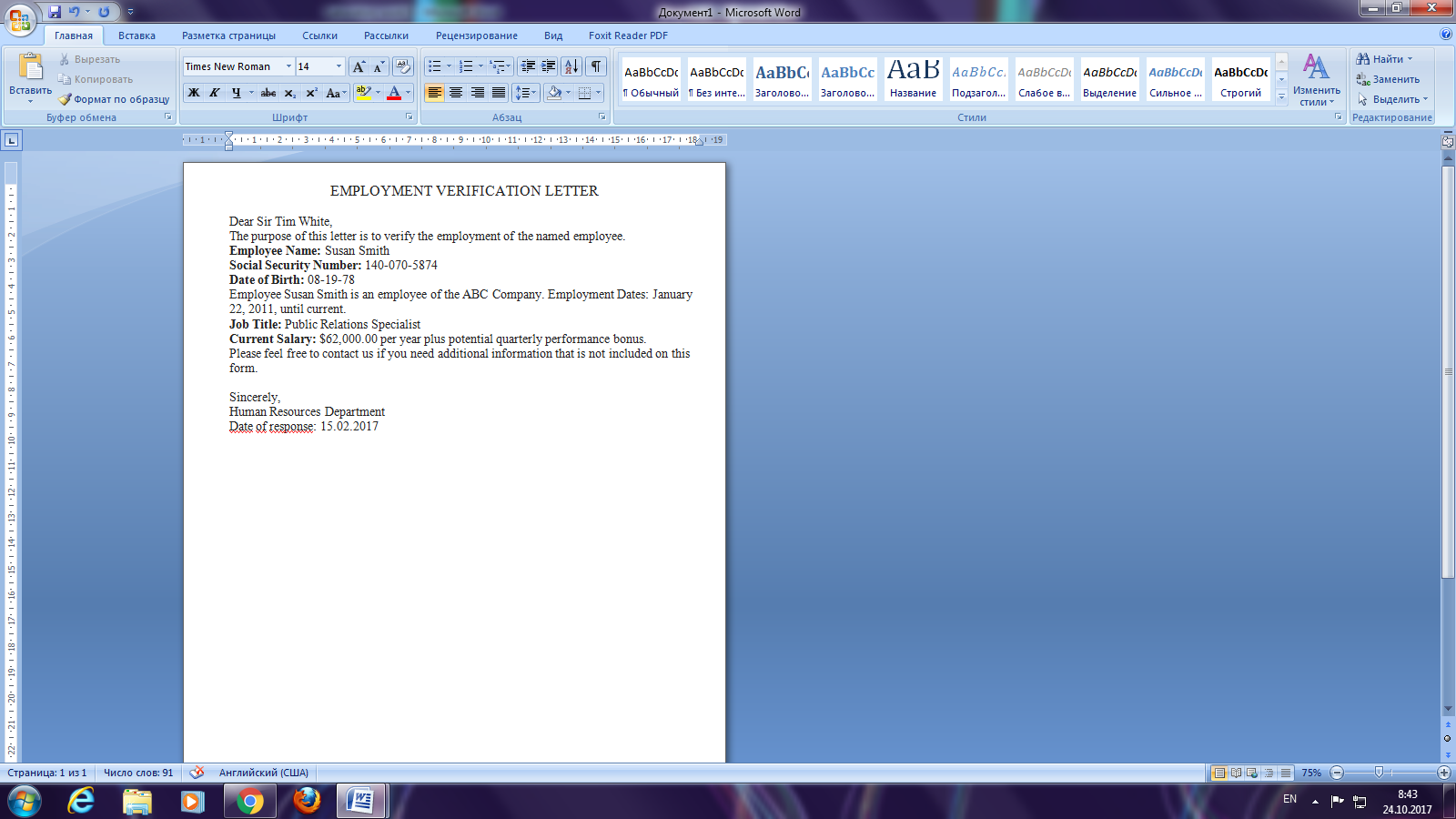
- Switch to Integration.doc;
- Set the cursor in the place of linking object (text) pasting and type any content
- Paste the linking object using the command Insert tab (Вкладка Вставка) Group text (Группа элементов текст) Object (Объект)From file (Создание из файла) Select (Обзор)Select (Выделите) Letter.txt select display as icon (в виде значка); link to file (связь с файлом) check box.
- Edit the source object and save the changings.
- Close Integration document.
- Reopen Integration document.
- Compare the state of Integration document with the document Letter.txt.
Advancement questions:
- What tool can be used for drawing the graphic objects in Word text processor?
- What approaches is the work with graphics based on in Word text processor?
- What is OLE –technologies?
- What is the difference between linked objects and embedded objects?
- What does Group objects mean?
While inserting a file (such as Word, Excel, PowerPoint, PDF, image, etc.) as an object into a Word document, you can either create a new or use an existing file.
Create a new file and insert as an object
1. Place the mouse cursor where you want to create the object.
2. From the Ribbon, under the tab Insert, within the group Text, click Object. The object dialog box appears.
3. Select an object to create from the Object Type list.
4. Select the Display as icon check box.
5. Word creates an icon of the selected Program at the cursor position and opens the program to create a new file.
For example, if you select object type as “Microsoft Office Excel Worksheet”, an Excel icon is created at the cursor position and then Word opens the Excel program to create a new Excel document.
Insert an existing file as an object
1. You can insert an existing file into your document in two different ways: either embed the file or link the file.
2. Place your mouse cursor where you want to create the object
3. From the Ribbon, under the tab Insert, within the group Text, click Object. The object dialog box appears.
4. From the dialog box, click Create from File.
5. Click the Browse button to locate the file in your system.
6. Select the Display as icon check box.
7. The object icon is created at the cursor position. This way you can embed a file into your document.
8. If you want to link the file, also select the Link to File check box.
Difference between embedding and linking an existing file
If you want to update an embedded file, you have to double-click the object to open the file and then edit. Updating the source file will not update the embedded file.
However, if you are linking an existing file, then changes in the source file will be reflected in the linked file.
About wordknowhowhttp://wordknowhow.comThis blog site was started to help people with Microsoft Word. I use Word a lot at work, and I understand that some features are difficult to use. There were no simplified instructions online to help me use these features. It is for this reason that this site exists; to make your life easier with Word.
Feel free to post your comments, queries, suggestions, etc. I will do my best to help you!
Whether you’re using Microsoft Word, Excel, or PowerPoint, adding images and other objects adds visual appeal to your document, spreadsheet, or presentation. Here’s how to do it.
Inserting Images from Your Computer
Office applications allow you to insert images stored on your computer’s hard drive. To do so, place the cursor in the location that you would like the image to appear and select the “Pictures” option, found in the “Insert” tab.
In Word or Excel, this option can be found in the “Illustrations” group.
In PowerPoint, it’s found in the “Images” group.
File Explorer will open. Navigate to the location of the image file, select it, then select “Insert.”
The image will now be inserted.
RELATED: How to Position Images and Other Objects in Microsoft Word
Inserting Images from the Web
If you don’t have the image you want to insert stored locally on your computer, you can pull one from the web directly from the Office app. To get started, in Word and Excel, click on the “Insert” tab, locate the “Illustrations” group, and select “Online Pictures.”
In PowerPoint, go to the “Images” group within the “Insert” tab. From there, select “Online pictures.”
Bing’s Image Search will appear in a separate window. Input the search terms in the search bar and select the image that you want to insert. Once selected, click “Insert.”
You can also select and insert multiple images at once using this method.
RELATED: How to Automatically Size Pictures in PowerPoint
Inserting Charts
Charts are a good resource for displaying trends in data over a set period. If charts are what you’re looking for, you can find the option in the “Illustrations” group of the “Insert” tab in Word and PowerPoint.
Selecting the “Chart” option will open the “Insert Chart” dialogue box. Select a category on the left-hand side, click the chart you want to use, then choose “OK.”
The chart will be inserted.
RELATED: How to Create a Flowchart in Word
With one of the major purposes of Excel being to display data trends, Microsoft gave it a dedicated “Charts” section—along with a “Tours” and “Sparklines” section—for quicker access to the selection of charts available in Office.
Taking and Inserting Screenshots
Office has a built-in snipping tool that allows you to take screenshots and place them directly in your document. This option can be found in the “Illustrations” group on Word and Excel of the “Insert” tab.
In PowerPoint, you’ll find the option in the “Images” group.
Once you select the “Screenshot” option, a drop-down menu will appear. It will display a snapshot of any window you currently have open on your computer. If you wish to insert one of those, simply clicking it will do the trick. If you want to take a screenshot of a specific portion of the screen, you can select “Screen Clipping.”
Once selected, all you need to do to capture part of your screen is click, drag, and release. The portion you captured will automatically appear in your document.
RELATED: How to Use the Snipping Tool in Windows to Take Screenshots
Inserting Shapes
Sometimes a simple shape is all you need to illustrate a point. If a shape is what you’re looking for, select “Shapes” found in the “Insert” tab’s “Illustrations” group on Word, Excel, and PowerPoint.
A drop-down menu will appear, showing a library of shapes. Select the one you wish to insert.
If you want to tweak a shape a little, you can do so by using its edit points. Alternatively, you can draw and edit your own shape if you can’t find the shape you’re looking for.
Inserting Icons
You can also help illustrate your point by using symbols and icons. By selecting “Icons” in the “Illustrations” group of the “Insert” tab on Word, Excel, and PowerPoint, you’ll find a generous selection of icons to choose from.
In the new window that appears, you can browse through the selection of icons provided by Microsoft. Once you find the one you’re looking for, select “Insert.”
The icon will now appear in your Office app.
Inserting 3D Models
Office offers a selection of 3D models, providing a unique resource for users wanting to rotate an object to see it from all angles. This option can be found in the “Illustrations” group of the “Insert” tab.
Selecting “3D Models” will open a new window. Here, navigate through the different models available and choose the one you wish to use. Once selected, click “Insert.”
The 3D model will now be inserted. To rotate the model, click and drag from the middle of the image.
RELATED: How to Add Alternative Text to an Object in PowerPoint
Inserting SmartArt
SmartArt provides a collection of diagrams, lists, charts, and so on. To insert a SmartArt graphic, select “SmartArt,” found in the “Illustrations” group of the “Insert” tab in Word, Excel, and PowerPoint.
The “Choose a SmartArt Graphic” dialogue box will appear. Select a category from the list on the left-hand side. Next, choose your graphic, then select “OK.”
Your SmartArt will now be inserted.
RELATED: How to Build a PowerPoint Organizational Chart With Excel Data
READ NEXT
- › How to Make Only One Page Landscape in a Word Document
- › How to Create a Progress Bar in Microsoft PowerPoint
- › How to Rotate Text in Microsoft PowerPoint
- › How to Insert a PDF into Microsoft Word
- › How to Put Borders Around Images in Microsoft Word
- › How to Create a Countdown Timer in Microsoft PowerPoint
- › How to Quickly Search the Menus in Microsoft Office
- › Google Chrome Is Getting Faster














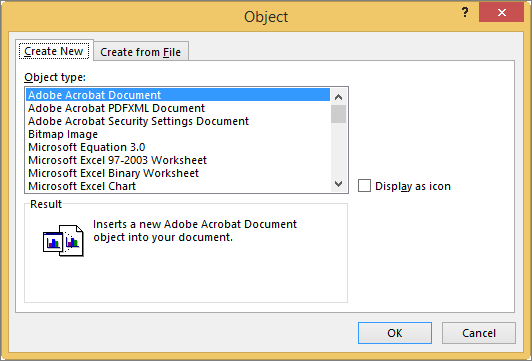
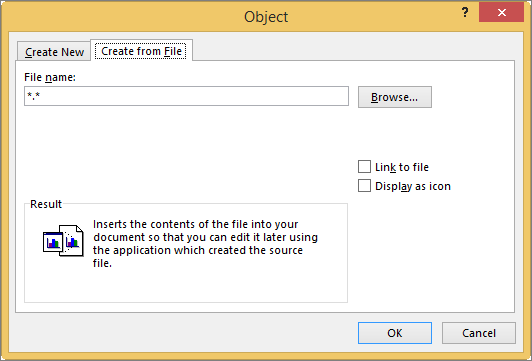
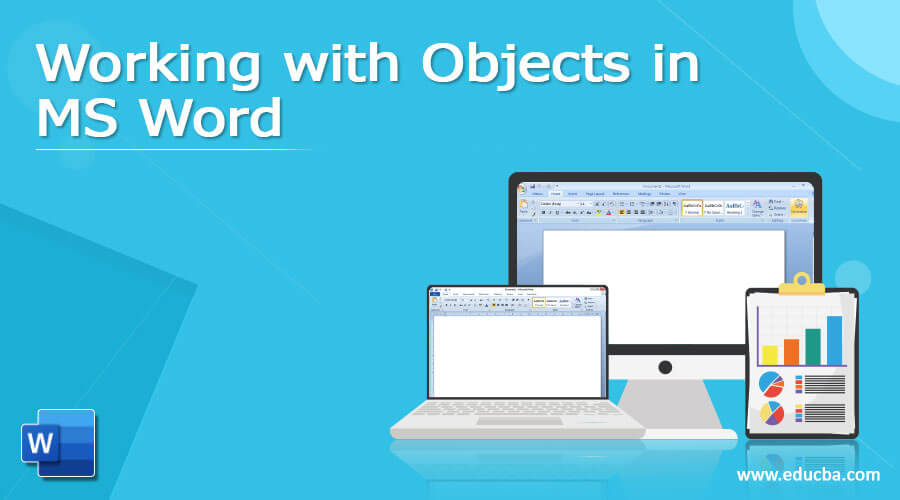

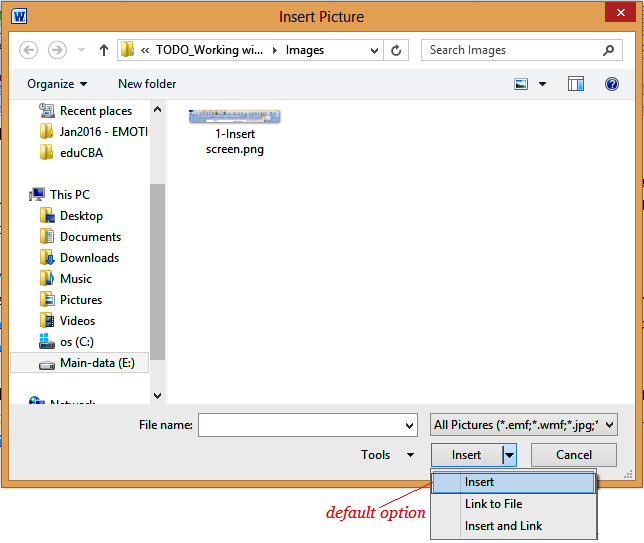

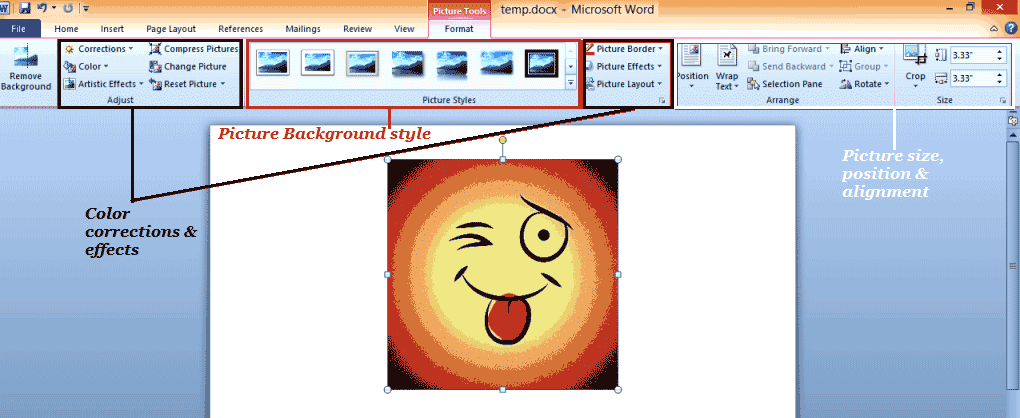


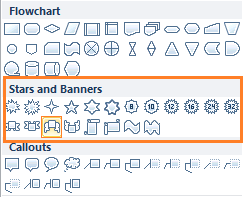




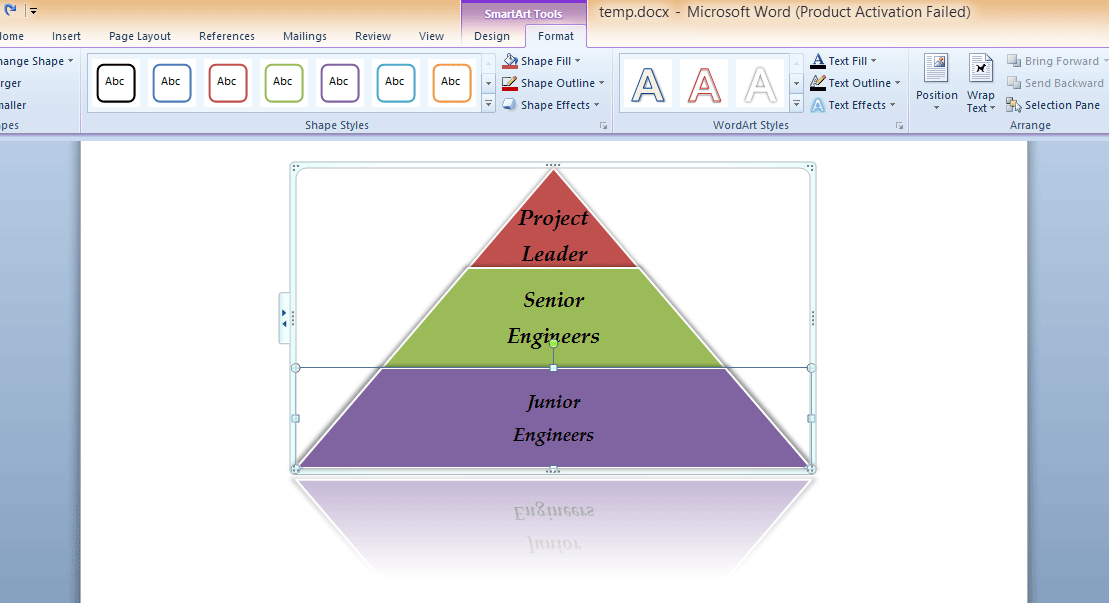




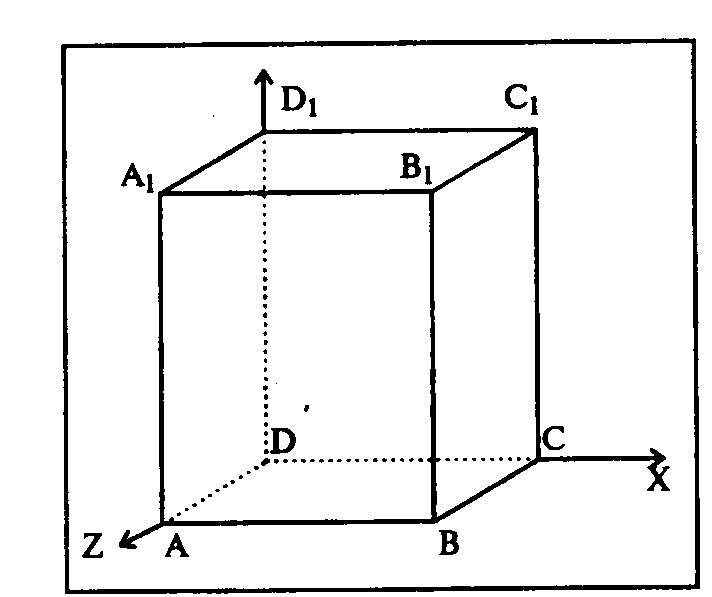
 – dotted-dashes (штрих пунктирный);
– dotted-dashes (штрих пунктирный); .
. in Format tab (Вкладка формат)Shape Styles group (Группа элементов Стили фигур)Shape outline(Контур фигуры)(the frame should be selected), select in the given pallet No line (Нет Линии),similarly the following Fill color (Цветзаливки)
in Format tab (Вкладка формат)Shape Styles group (Группа элементов Стили фигур)Shape outline(Контур фигуры)(the frame should be selected), select in the given pallet No line (Нет Линии),similarly the following Fill color (Цветзаливки) — No fill (Нет заливки), your frame becomes transparent. Now the text can be placed in it (we need only one letter –top labelling).
— No fill (Нет заливки), your frame becomes transparent. Now the text can be placed in it (we need only one letter –top labelling).